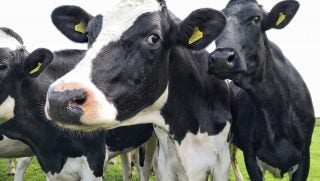Who doesn’t want to take advantage of those fluctuating commodity prices? However, crop rotation flexibility can be an issue for wheat growers, especially when it comes to weed control.
We had the opportunity to visit with Dow AgroSciences at Commody Classic to find out more information about their latest herbicide technology, Quelex, which aims to provide outstanding broadleaf weed control and allow for more cropping options.
As Abe Smith, Market Development Manager, Dow AgroSciences, pointed out — when selecting herbicides, it is important to consider not only what weeds need to be controlled but also what might go in the ground next.
“When we talk about resistance management in cereals, we have issues with ALS resistance and glyphosate resistance in our cereal areas because we have people who rotate between corn and beans and those problems ares starting to carry over into cereals as well,” Smith said.
Quelex is unique because it includes Arylex active, the first active ingredient of a new chemical family of Group 4 herbicides, and is an effective tool for ALS- and glyphosate-resistant weed management. Wheat growers can control 28 broadleaf weeds with Quelex, including resistant henbit, chickweed, marestail, mustards, common lambsquarters, and redroot pigweed.
Smith said in addition to broadleaf weed control, Quelex gives growers some rotational flexibility that they might not have had before.
“One of the exciting things with Quelex is that growers now more than ever are looking to alternative crops sometimes, looking for rotation options that they traditionally haven’t looked at,” Smith said. “Quelex offers three month rotations to things like sorghum or sunflowers, soybeans and even cotton to where growers can be responsive to what the commodity prices are doing — if they want a double crop in season they have the ability to look at some of these secondary crops as a double crop or if they potentially have a disaster situation with a freeze out or a hail, they now have more crops available to rotate to than they would traditionally have otherwise.”



